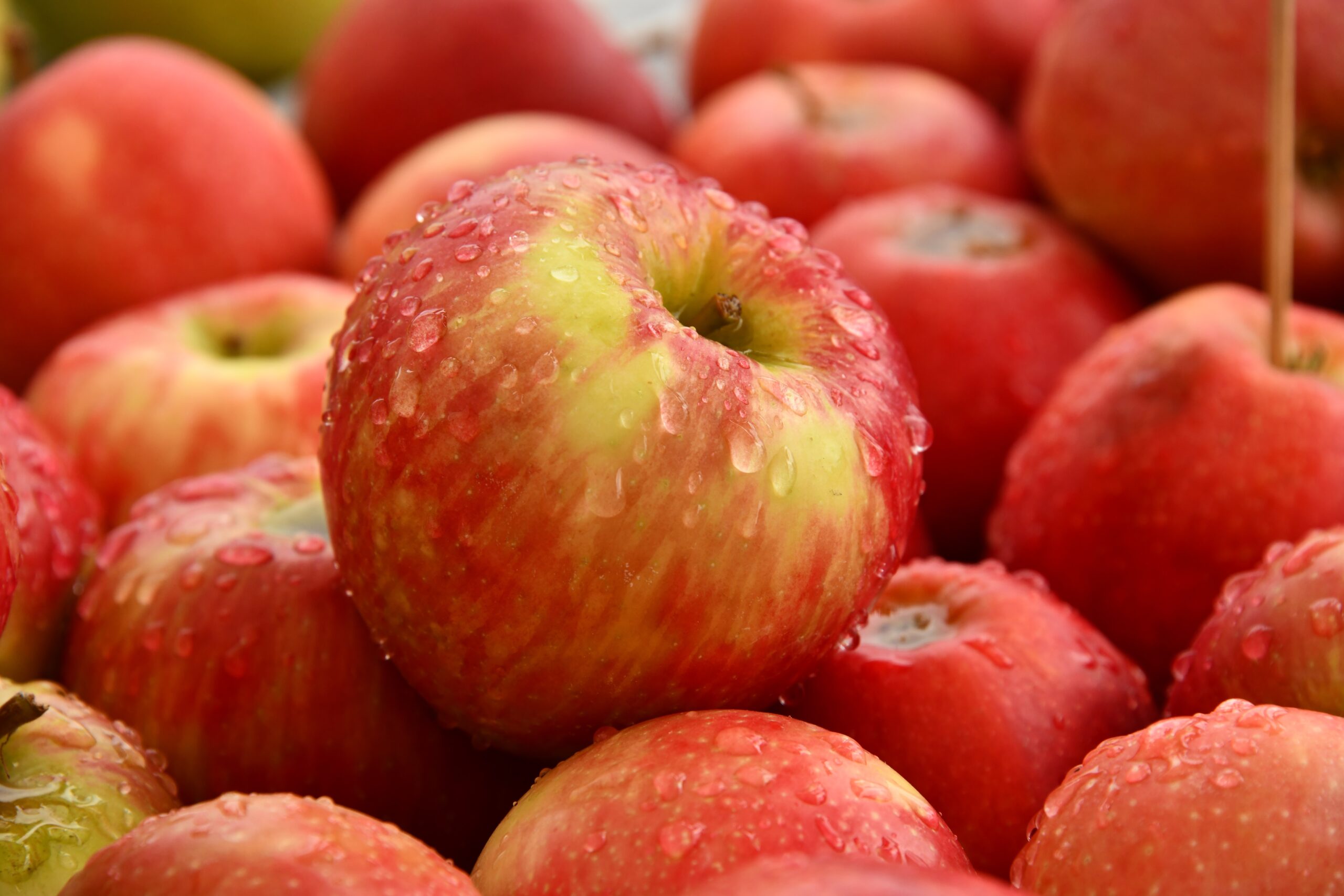Fall is the perfect time to bake something bursting with apples and cinnamon and drink a mug full of warm spiced apple cider. You might have already gone to an orchard to pick apples that range from crisp to crunchy, tart to sweet and juicy. But have you ever stopped and wondered how many different varieties of apples there are and where they all come from?
There are over seven thousand recognized apple varieties worldwide. All of our modern-day apples belong to the same species, Malus domestica. However, they each have different traits due to genetic differences and mutations. Many generations of breeding have caused different genes to become expressed in the different varieties.
New apple varieties are created by crossbreeding different apple breeds together. This tedious and time-consuming process traditionally involves lots of careful, meticulous bookkeeping. Researchers must first identify apples with ideal characteristics like crispness, disease resistance, or taste. These “parent” apples will then be cross-pollinated by hand to mimic how cross-pollination naturally occurs. Once this is done, researchers wait until the flowers of the apple trees mature into fruits so that they can plant seeds from these fruits and wait once again until these seedlings are able to bear fruit.
The growing process typically takes four to five years, after which the evaluation and tasting begin. During the first phase of the tasting process, researchers taste up to six hundred apples a day. Thousands of apples are tasted, but only around ten make it to the next round. These special apples are cloned and planted to then be tasted and evaluated again (another four to five years!). More seedlings are discarded and then the very best varieties get sent to research centers and commercial orchards to be evaluated for the final time. The varieties approved by these testers are then eventually released to the public for tasting. Overall, the process from the initial crossbreeding to public tasting of an apple variety takes over twenty years!
Even after growing all these varieties, maintaining the crop isn’t as simple as just planting all the seeds from one apple. If you take an apple with six seeds and plant all six seeds, it is likely every apple that results from each of these seeds will taste and look different from one another and from the original apple. To combat this, apple growers use a grafting technique to cultivate more apples of the same variety rather than planting the seeds. Growers remove a flowering branch of the desired apple variety and insert it into the root of another tree. The limbs that then grow from this tree will be clones of the tree from which they were grafted, resulting in the desired fruit.
This process has been the standard way of creating new apple varieties for decades, but new genome sequencing and DNA editing technologies have paved the way for more efficient processes. Now, researchers are able to use whole genome sequencing to identify the distinct combination of gene sequences that are associated with a specific trait, such as crispness, taste, color, or resistance to a certain disease. They can then use gene editing technology like Clustered Regularly Short Palindromic Repeats (CRISPR) to create apple varieties with a desired trait. This method of creating genetically modified fruit was first used back in 2017 when Canadian researchers created Arctic Apples, a genetically modified version of the fan favorite Golden Delicious that won’t turn brown after being cut. To make this possible, scientists disrupted the expression of plant polyphenol oxidases, a gene that makes the apple turn brown (oxidation) when it has been cut and exposed to air. Now these apples are for sale across the US and Canada.
So, the next time when you enjoy a crisp, juicy apple or eat a warm slice of apple pie, maybe you’ll think about the tremendous amount of time and effort that apple researchers have devoted to bring you that tasty bite!

